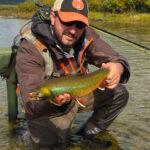The Best Anglers Never Stop Learning
The Best Anglers Never Stop Learning
The Best Anglers Never Stop Learning
The Best Anglers Never Stop Learning
I finally had my first real shots at tarpon on the fly, and man, was it frustrating. I had multiple fish follow my fly, track it for several feet, and then just… refuse. No eat, just a slow turn away. I tried changing my strip speed, switching flies, even going lighter on tippet, but nothing worked. What’s the secret to getting tarpon to commit when they seem interested but won’t eat?

If I had a dollar for every tarpon that followed but didn’t eat, I’d own my own island by now. The good news? You’re getting the right reactions—tarpon are noticing your fly, tracking it, and showing interest. That means you’re in the ballpark. Now it’s time to fine-tune the details that turn a follow into an eat.
If tarpon are following your fly but not eating, you’re already 90% there. The last 10% is all about reading the fish, adjusting your angle, and controlling your strip cadence. When everything lines up, and that fish finally commits, you’ll never forget it.
No recommended resources available.
"*" indicates required fields
Sign up for full access to the Learning Center
and all the FlyBrary Content.

payment methods accepted
Copyright © 2003 – 2025 MidCurrent LLC, All Rights Reserved.
Copyright © 2003 – 2025 MidCurrent LLC, All Rights Reserved.